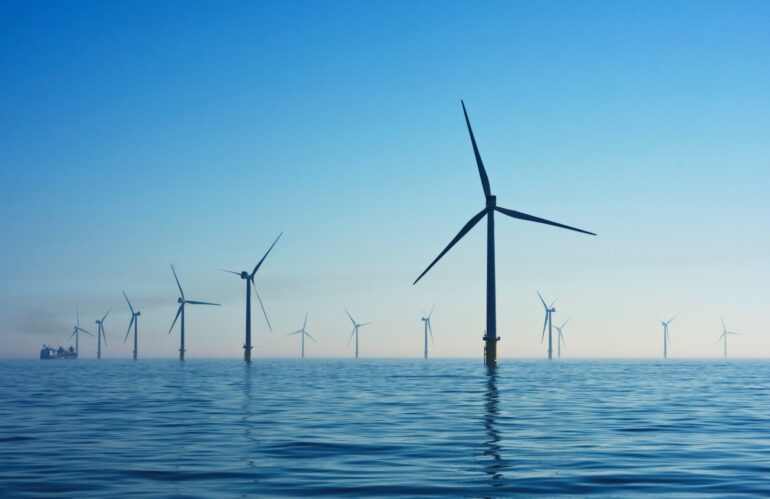As glaciers melt, coastlines crumble and weather patterns all over the world become more chaotic, you’re probably asking yourself: What can I do to slow climate change?
If you are an investor, one thing you can do is to create a climate-friendly portfolio. But how to get started? Even if you have a sizable fund to invest, can one person really make a difference?
We asked Chicago experts and companies to weigh in, and the answer is: Yes. You can make a difference for the climate — and make money doing so.
“It’s such a big market opportunity,” explains Priya Parrish, an adjunct professor at the University of Chicago Booth School of Business as well as a partner and chief investment officer at investment fund Impact Engine. “There is a real need and demand from corporations to make their manufacturing processes, their supply chains, their products and their packaging more sustainable. They are looking for new technologies and new companies to help them do this.”

Know What You Own
Most investors hold mutual funds and ETFs (exchange traded funds), and larger investors may also hold stakes in private equity funds, venture funds, etc. But what businesses are you investing in through these funds?
“A lot of times people own things that they don’t realize they own — things that are at odds with their personal values,” says Matthew Blume, a portfolio manager and the director of ESG research at Pekin Hardy Strauss Wealth Management.
So the first step in climate-proofing your investments is to take an inventory of what you own today. If you do it on your own, this may take some digging. If an investment professional handles your investments, ask them to walk you through the underlying holdings of any funds you’re in.

Own the Right Mutual Funds and Stocks
In the past, investing for values focused on divesting — getting rid of the “bad” companies such as those in the fossil fuel business. But the field has evolved, and now, not all investment experts advocate divesting in all cases.
“A lot of times companies don’t listen to people who aren’t shareholders,” says Hilary Wiek, who covers impact investing for Morningstar subsidiary PitchBook, which provides research on capital markets. “Sometimes in order to move the dial on a company, if you think they’re willing to listen, you have to have some sort of stake at the table.”
So if you decide not to divest from a company even though you don’t love their climate policies, how do you get the message through to corporate management that you want them to change?
One way to make your voice heard is through proxies and shareholder resolutions. In recent years, shareholder actions pushing companies to improve their impact on the climate have proliferated. When you own individual shares in a company, you can vote on shareholder resolutions yourself. But if you own a mutual fund, the fund votes for you.
There are hundreds of funds out there labeled ESG, for “environmental, social and corporate governance.” The ones you want to own are the ones that are actually voting the way you would vote yourself.
“Make sure that they actively vote their proxies, and that their policies are aligned with fighting climate change,” Parrish advises. Mutual funds publish their voting records in their annual reports.
If you’re picking individual stocks, you can check the company’s ESG rating on Morningstar’s Sustainanalytics service.
Some funds go beyond simply voting. They engage with corporate management directly, and originate shareholder initiatives in line with investors’ values. Every year, Pekin Hardy Strauss’ Appleseed Fund publishes an impact report detailing how it worked with companies on behalf of its investors. For instance, in 2020, the fund filed a shareholder resolution urging Spirit Airlines to publish a sustainability report on its operations.
“The filing of the resolution led to a constructive engagement with Spirit’s management team in which the team agreed to significantly enhance the company’s sustainability disclosures,” Appleseed’s 2020 report stated.
Invest in Green Funds in Private Markets
If you’re a high net worth investor or you have a family office, you may hold investments in private equity or venture capital funds in addition to stocks and mutual funds. Here, too, there are climate-aligned options.

On the PitchBook platform, Wiek counts 39 smaller private market impact funds that list climate as one of focus points, and that are currently open to investments. Wiek looked at sub-$50 million funds, she says, because these are more likely to be open to non-institutional investors.
As with mutual funds, the key to making a difference through private markets is to make sure fund managers — and ultimately, the companies they hold — know what you, the investor, care about.
“Your advisor might be the one that’s conveying the message,” Wiek says.
Impact Engine is a Chicago venture capital and private equity firm that focuses on environmental sustainability in addition to other social issues. In order to make the greatest impact on the environment and to maximize returns, Parrish says IE looks for companies offering truly innovative products and services, and those that are far ahead of competitors on managing their environmental impact. Categories the firm invests in for climate change include renewable energy, energy efficiency, waste reduction and water usage. IE investments include Afresh, an inventory management system that grocery stores, including Fresh Thyme Market, use to reduce food waste, and Circuit, an electric shuttle service that ran a pilot program in Chicago.
Angel investing and crowdfunding present opportunities to fund early-stage companies using innovative approaches to slowing climate change.
If you’re an accredited investor, Parrish recommends seeking out like-minded individuals in angel investing groups to find green startups to fund. For crowdfunding, you don’t need to be an accredited investor. There are a number of crowdfunding websites listing startups seeking startup cash, including Raise Green and a subsection of Indiegogo.
What About Green Bonds? Blue Bonds?
Governments, organizations and corporations have all issued fixed-income securities dubbed “green bonds” — that is, bonds meant to help the environment. When targeted specifically at ocean health, these are sometimes called “blue bonds.”
Are these colorful bonds an area climate-friendly investors should focus on? Maybe.
“One of the challenges on the bond side is that there’s not a lot of standardization in the terminology yet. Almost anything can be called a green bond,” Blume says. Because of that, at Pekin Hardy Strauss, “We’ve not done a lot of green bond buying, because it’s still such a nascent market. I would expect that there will be more opportunities there going forward.”
That doesn’t mean you can’t buy bonds with climate goals in mind. Just like with equities, you can always choose bonds issued by companies that are leading the way in climate. And as with all investments, you can let your advisor, fund manager and everyone else involved know that you’re interested in green bonds.
“The more voices that speak up, the more the asset managers are going to listen,” Wiek says.
More Resources for Green Investing:
Morningstar Sustainanalytics Company ESG ratings: To evaluate your current portfolio or before deciding to buy a company’s stock, look up their rating to find out the company’s ESG Risk Rating, define.
Impact Engine: Venture capital and private equity firm focused on environmental sustainability and other impact issues. Investors include institutions, family offices, foundations and individuals.
More from Better:
- 2023 Top Health, Wellness and Fitness Influencers
- How To Help: Where to Donate and Volunteer to Support Youth Health, Fitness and Nutrition
- Where to Travel in 2023: 6 of the Best Places to Visit This Year

Carrie Kirby spends a lot of time asking people about something they think about but rarely talk about: money. Her work on personal finance, business and technology has appeared in San Francisco Magazine, Consumers Digest, Wise Bread and more publications. Carrie’s most recent work about her other love, travel, appears in The Best Women’s Travel Writing: Volume 10. She lives on an island (Alameda) with her husband and three kids, and blogs about getting them all where they need to go without owning a car at carfreemom.com.

